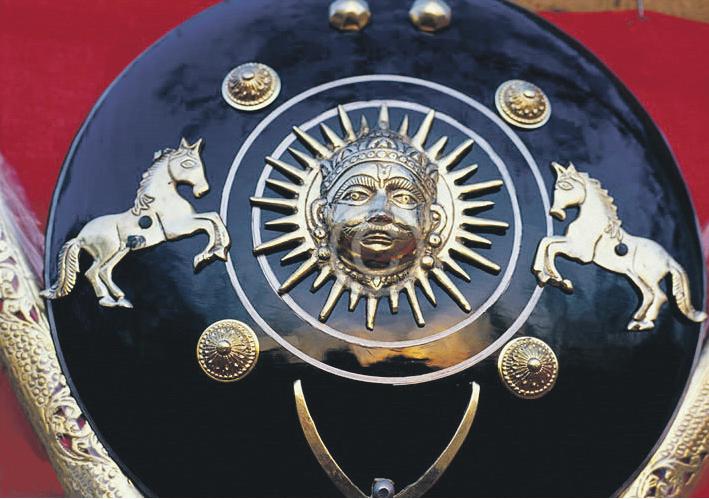
2 minute read
Rajasthan
from 2013-03 Sydney (2)
by Indian Link

The whole adventure had the feel of a Bollywood flick. It culminated with a camel ride, eating an authentic Rajasthani meal, and watching a traditional Rajasthani folk dance overlooking the Fateh Sagar lake, to visit one of the most famous monuments, something that left me absolutely astounded and speechless. Astride his faithful horse, Chetak, is a huge bronze statue of Maharana Pratap. I couldn’t take my eyes off him, as a feeling of awe and reverence swelled within me. The artist had captured his dignity and grace with perfection.

As we got close to the city, we got to experience its hustle and bustle. We first visited Saheliyon ki Badi in the northern part of the city with beautiful gardens and water features, and then headed straight to the Udaipur City Palace, which has plenty to see. Here, Rajputana history and tradition is on display. And then we saw the Lake Palace, which is absolutely breathtaking. Udaipur is indeed the Venice of the East. Our last destination was the Nathdwara Krishna temple. It is believed that the statue of the deity was originally worshipped in Mathura, and had to be moved to safety, to avoid being plundered by Aurangzeb. It does not have the typical temple structure, and is called the ‘Haveli of Shrinathji’. That was my Rajasthani rendezvous: fabulous, breathtaking, mesmerising, and 100% enchanting. It is true that there is magic in the air there, and it beckons you to return to be enticed time and time again. Those who plan to visit the place must do as the locals do. It is important to be a part of the sand and the stone, and hear the songs and the laughter, the war cries and the triumphant roars that reverberate from the fort walls, even today. As I headed back to Delhi, it was like moving from one era to another, because although modernity has touched parts of this beautiful state, the charm, the aura and the magical anticipation of things to come, still exist.
China. This relates to the population of economy, due to its natural comfort with spoken English by Indian graduates is the reason that multinational corporations are even if it is for relatively menial work, such detractors of the country’s growth, which dilutes the country’s advantages elsewhere. But could the rich history and tradition be another detractor from China reaching its development potential? For example, a key challenge for Chinese within a Confucian tradition and hierarchy. Individual risk taking, and alternative thinking is not only difficult, through intense conformity.
Powerful Tool Of Enforcing
Similar issues may exist among Indians who too strictly maintain a traditional mindset. A common criticism of Indian workers applying their skills abroad is that they are excellent workers when told what to do or given a set of instructions,
Reverence For Tradition And Conformity Are
All communities from cultures distant to the dominant Anglo-Saxon variety must contend with the right balance of tradition and modernity. It can be a painful balancing conflict with children or a sense of loss about one’s past. In America, leaders of the Indian community have made no secret that powerful Jewish community balance between tradition, community consciousness aware of one’s past. Just as my patients can’t entirely make sense of their lives lose a moral and cultural balance if they lose a sense of their history and culture. But a weighty, old civilisation should not be rested upon for its own sake, or used modernity and beyond.










